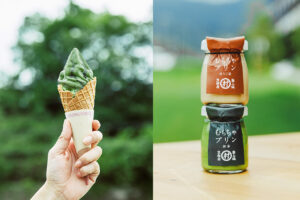
PR
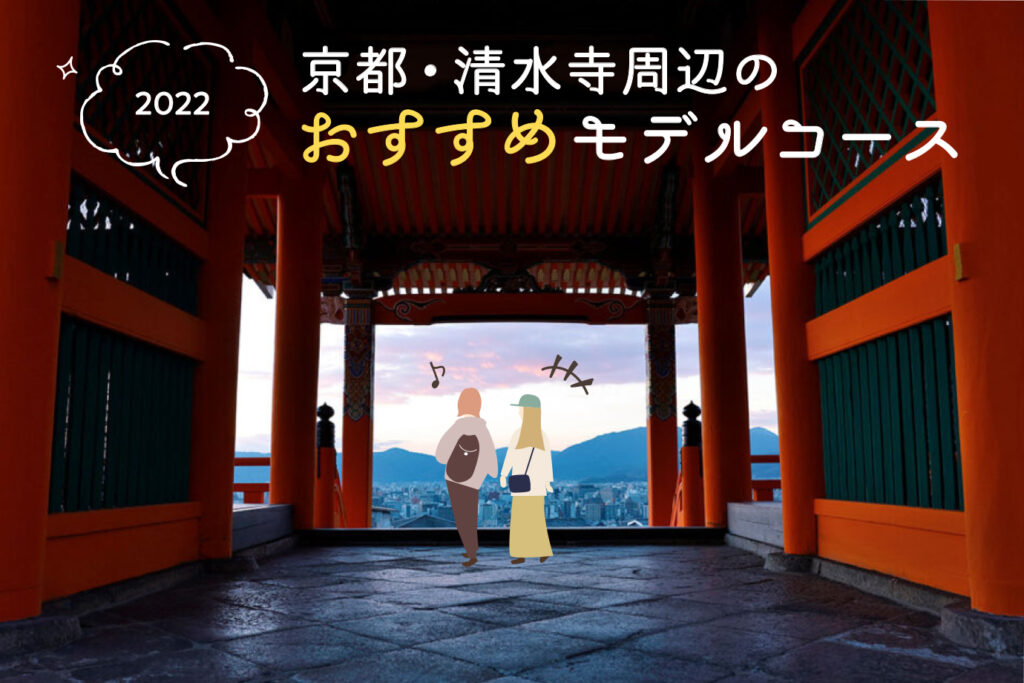

Kiyomizu-dera Temple is one of Kyoto's most popular tourist attractions.
In the surrounding Higashiyama/Gion area, there are many famous temples and shrines such as Yasaka Shrine and Kenninji Temple, as well as many souvenir stores and restaurants. We will introduce a model course that will allow you to fully enjoy not only the classic spots but also the hottest spots in the area. Even those who have visited the area many times will enjoy it!
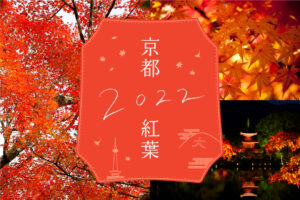
From the best places to view the autumn leaves to the worst spots, we will guide you along with the best times to view the leaves!
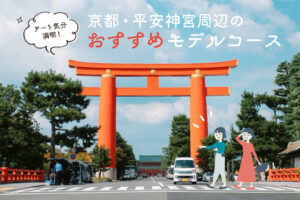
The Okazaki area has a high concentration of culture and art. A model course to fully enjoy the artistic atmosphere of the Okazaki area is introduced in a video and web article!
Take city bus line 206 (platform D2) or 100 (platform D1), or Kyoto bus line 18 (platform C3) from "Kyoto Ekimae" to "Gojozaka" stop, 10 minutes walk.
Time required: approx. 30 min.
Kyoto Bus operates only on Saturdays and holidays.
First, I took a morning break at "loose kyoto" on the approach to the restaurant. The aroma of donuts and coffee lifted my spirits. The doughnuts are crispy and light, made with domestic wheat, and the sweetness of the doughnuts is moderate due to the use of millet sugar. Let's make a plan for the course we will take at this stylish cafe with white walls.
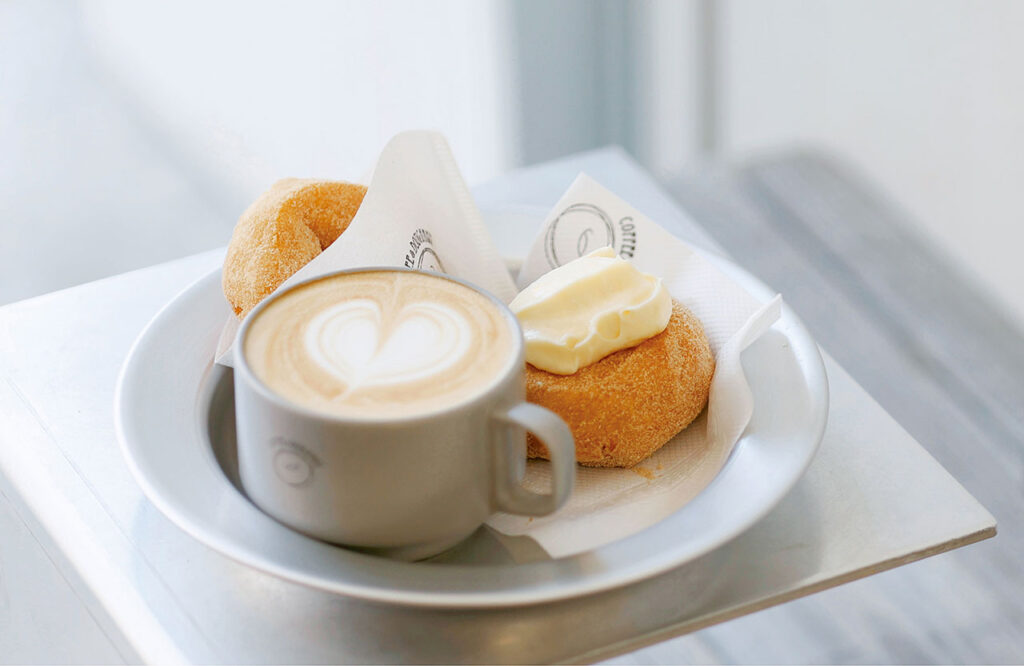
A 550 yen latte made with medium-roasted beans that are a blend of Brazilian and Guatemalan beans that go well with the sweetness of the milk. The dough is freshly sprinkled with cane sugar and has a rich flavor of domestic wheat for 250 yen. Custard top is +100 yen

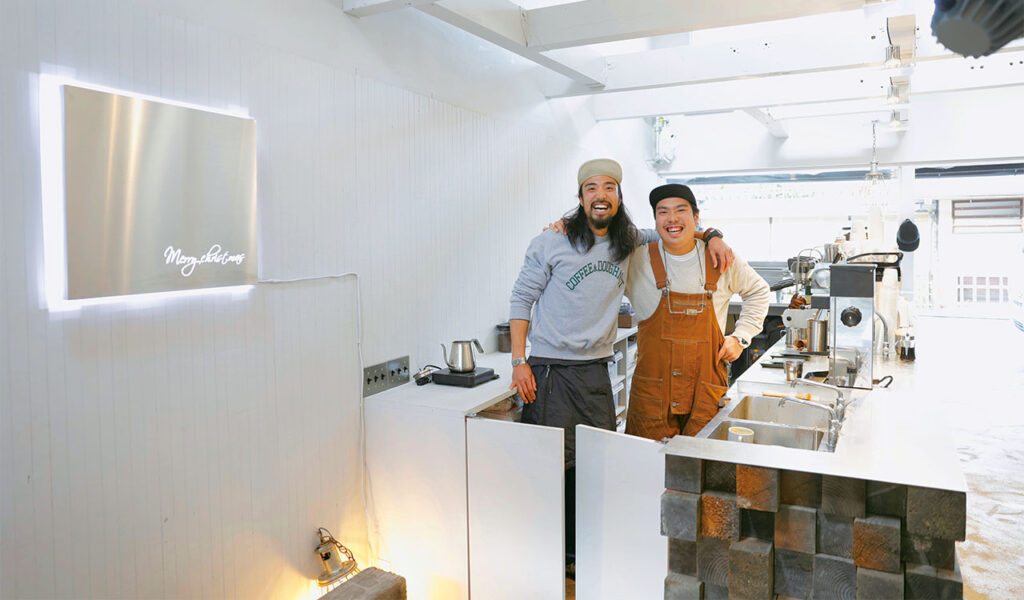
The owner, Umeda Brothers, energizes me.

We immediately went to Kiyomizu-dera Temple, the temple we were looking for. There are several ways to get to Kiyomizu-Dera Temple, including Niningsaka, Sanneizaka, and Gojozaka. This time, since we are coming from "loose kyoto," we will go through Sanneizaka. The Niomon Gate at the entrance, the three-story pagoda, one of the largest in Japan at about 31 meters high, and the main hall, so famous that there is a saying, "Jump off the stage at Kiyomizu. The main hall is famous for the proverb "jumping off the stage of Kiyomizu." There are many sights to see, including Otowa Falls, which is said to be a power spot, so take your time to explore the area. The autumn foliage is usually magnificent from late November to early December.
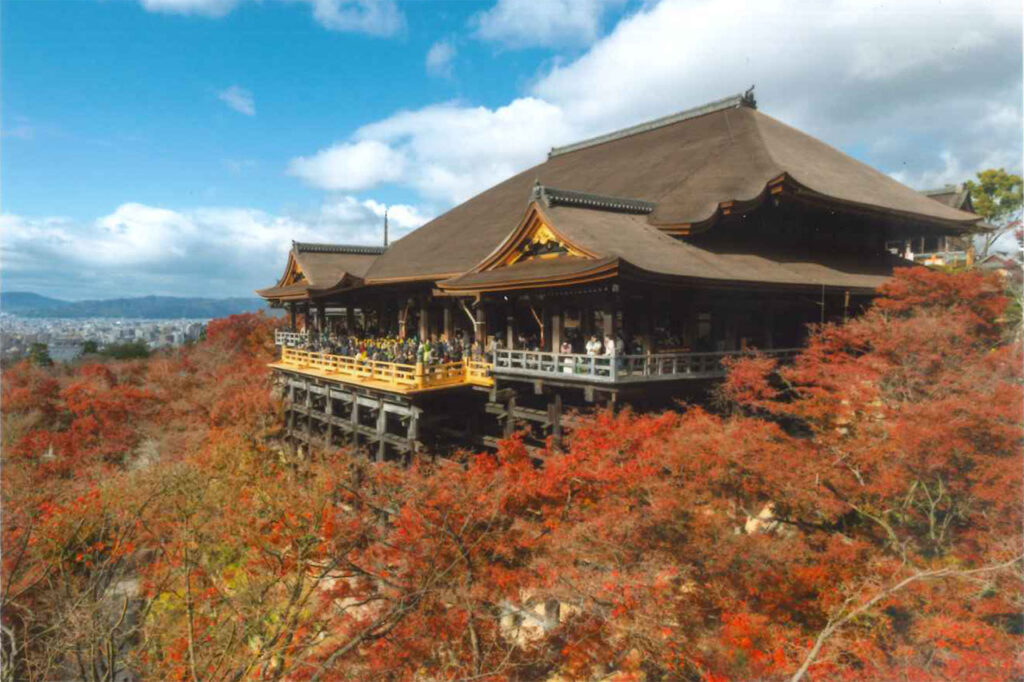
The stage of Kiyomizu protruding on a slope called Kinunkei in the south front of the main hall. It is about 13m high, as tall as a 4-story building.

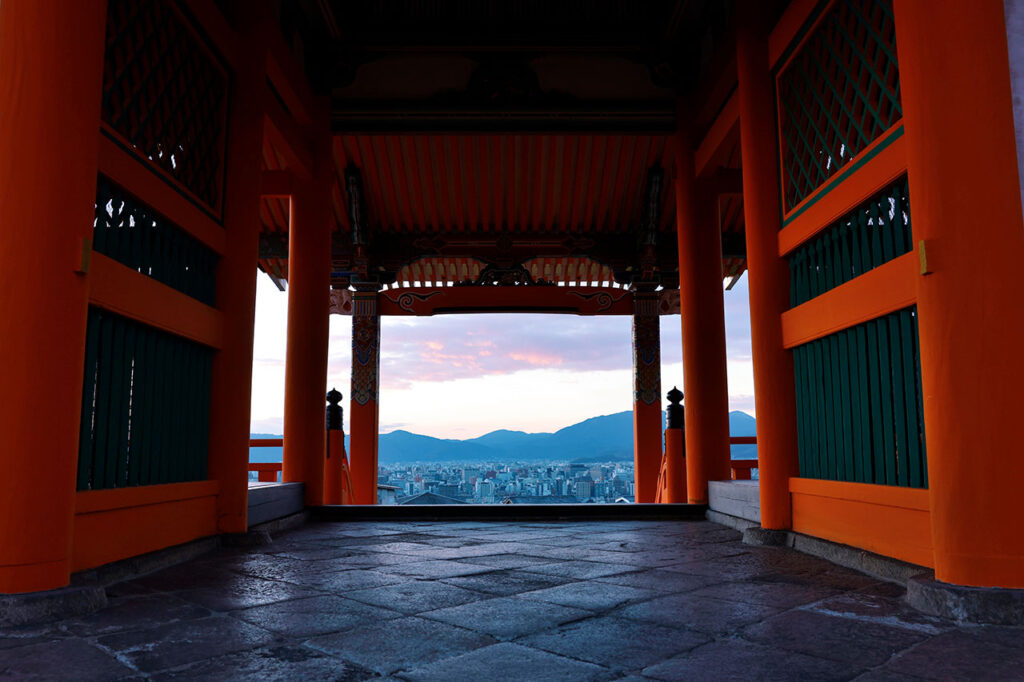
Niomon Gate, the main gate of Kiyomizu-dera Temple, is designated as a National Important Cultural Property.

After a lot of walking, you can go to the much talked-about collaboration store located about 3 minutes away from Kiyomizu-dera Temple. Itoken], a long-established Japanese sweets store established in 1864, and [SOU・SOU], a textile brand in Kyoto, will launch "delicious x photogenic" takeout sweets, Japanese sweets, and sundries in September 2021. Take pictures of the cute sweets and enjoy selecting souvenirs together.
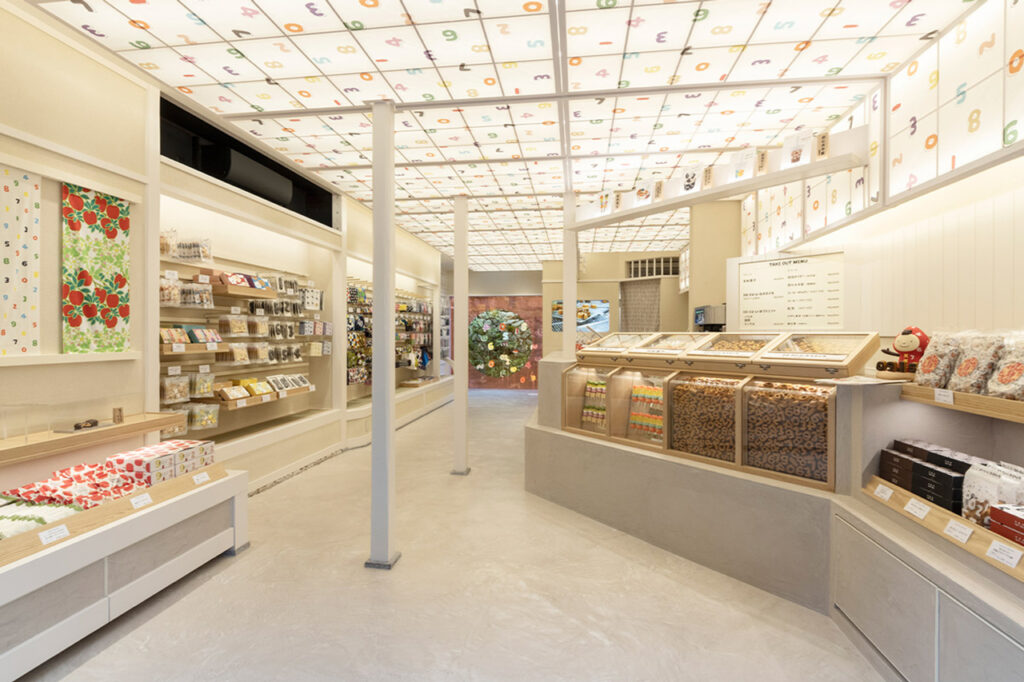

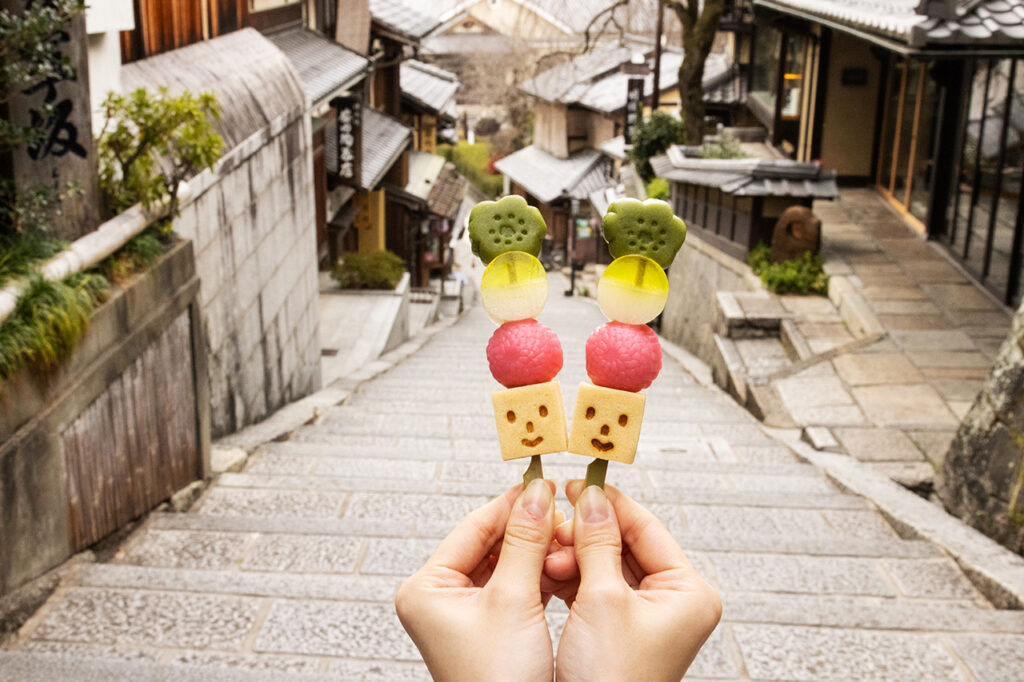

Passing through Niningsaka and Nene-no-michi, go to Yasaka Koshindo. The colorful "kuri-monkeys" are popular as a photo spot. It is said that if you hold back one of your desires and tie a monkey to it, your wish will come true. After that, stop by Hokanji Temple, also known as Yasaka Pagoda, and continue on to Yasaka Shrine.
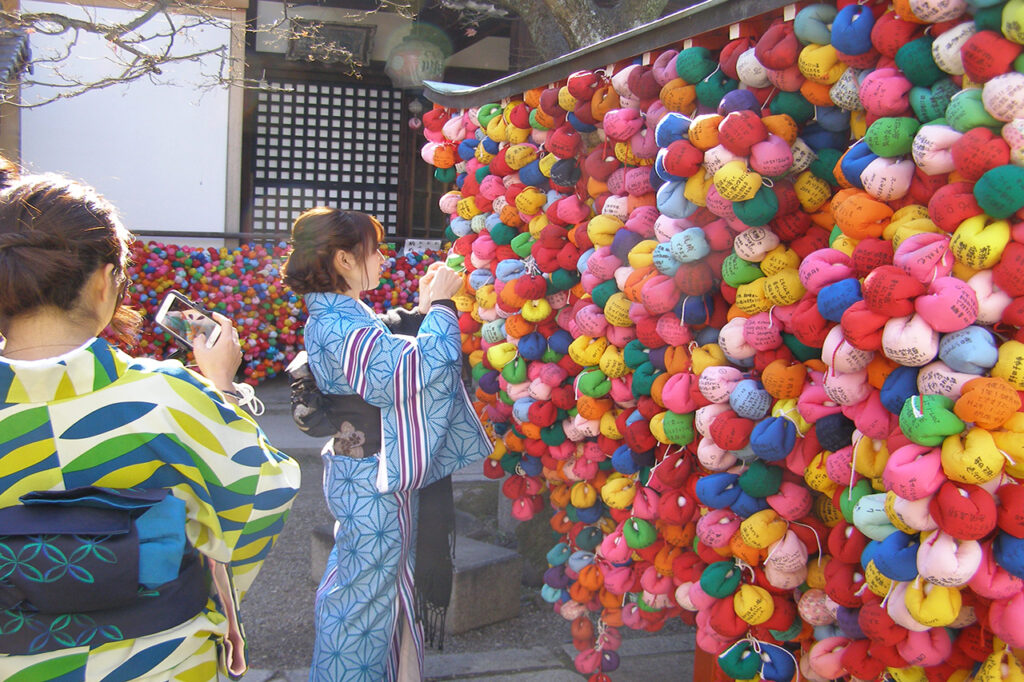

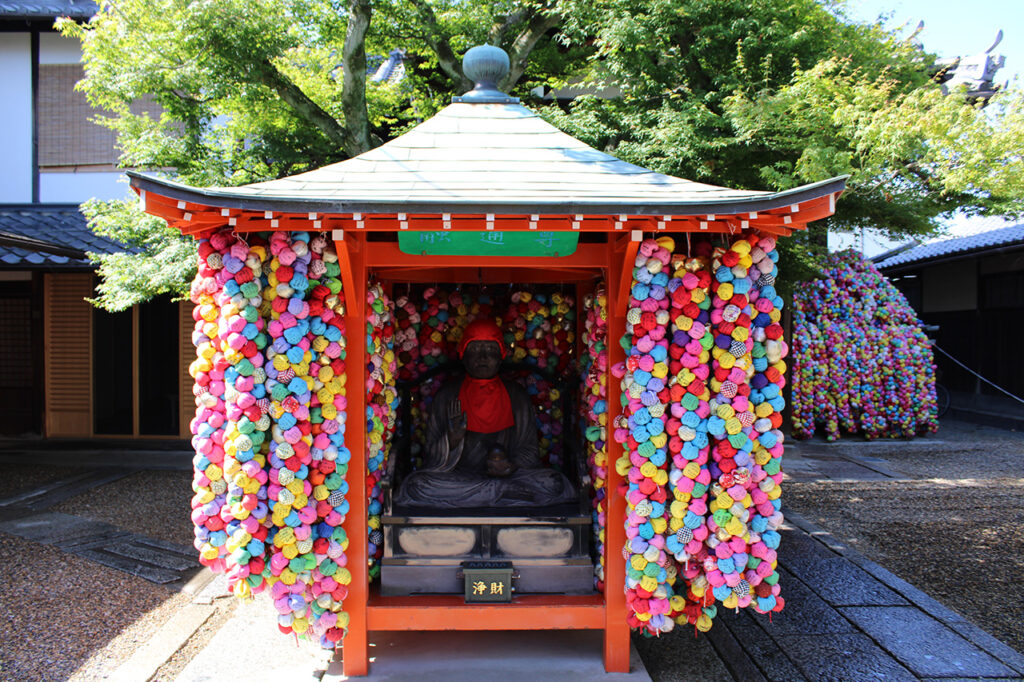

Yasaka Shrine has a deep connection with the people of Kyoto, as it has been the site of the "Gion Festival" since the Heian period (794-1185) to pray for the removal of plague and misfortune. The shrine is visited by locals and people from all over the country to pray for protection from bad luck, and is a must-see spot when visiting Gion. If you have time, you can also visit Maruyama Park next door and the three gates of Chion-in, the largest existing double gate in Japan, which are also close by.
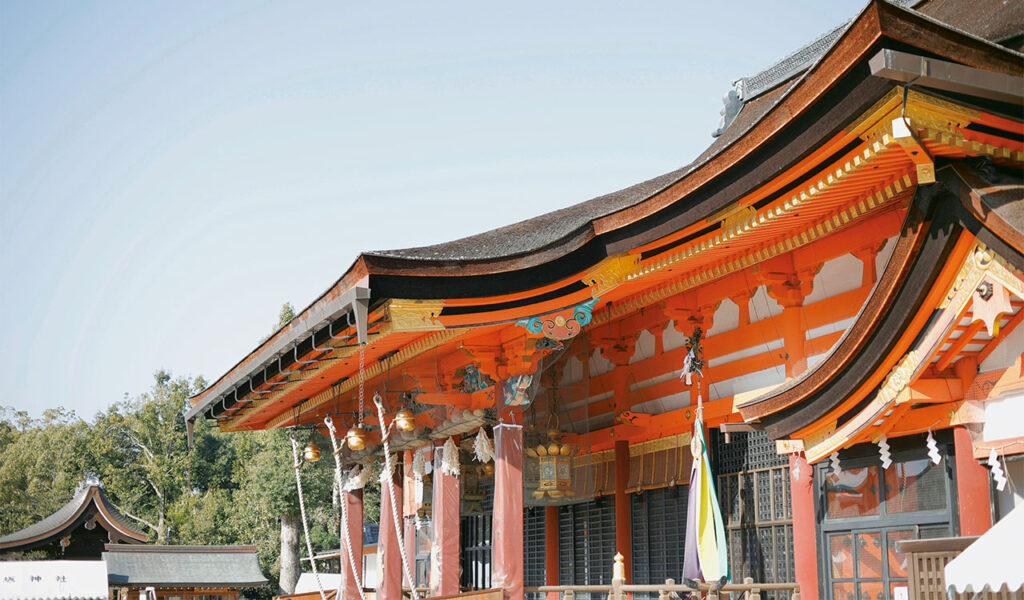

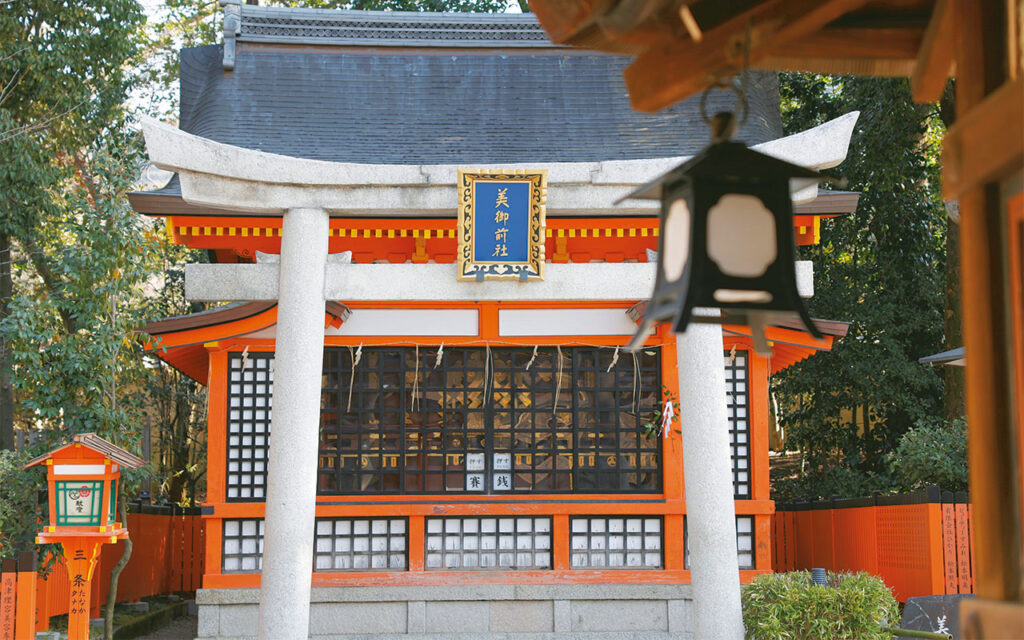

You've walked a lot in the morning and you're getting hungry. Gion Duck Rice, a popular restaurant that opened in 2022, is a sister restaurant of Gion Duck Noodles, which serves duck ramen and specializes in duck hittimabushi. It is a sister restaurant of Gion Duck Noodles, which serves duck ramen and specializes in duck hitsu-mabushi. The duck loin cooked at low temperature is surprisingly tender and goes well with the broth for chazuke.
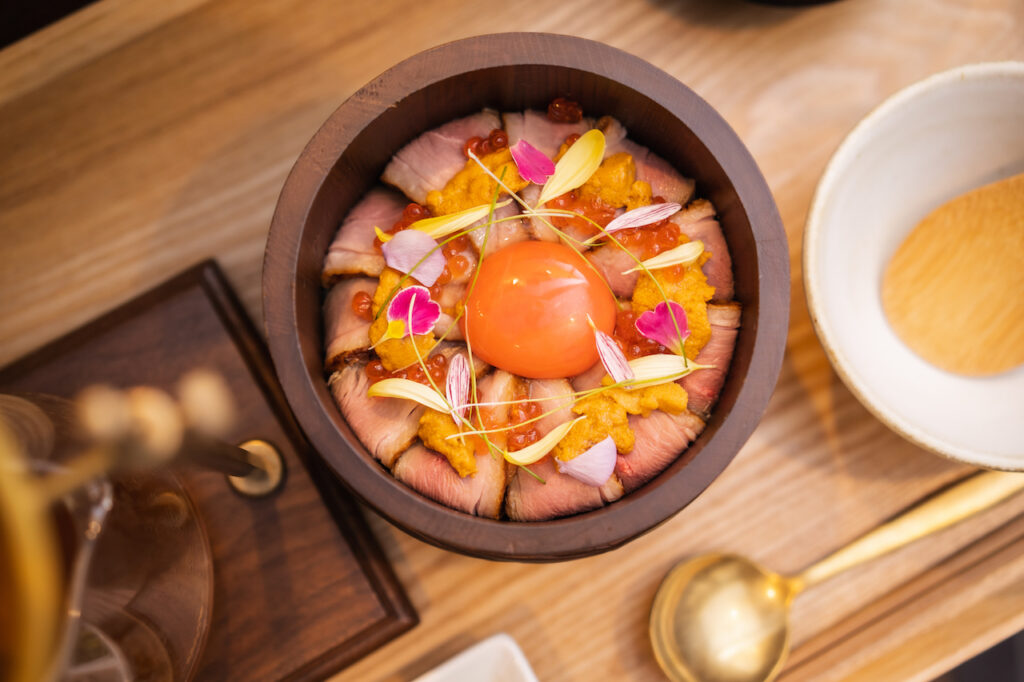
Kamo Hitsumabushi Gozen Special Ver. 2530 yen. Kishu duck is used. You can choose from small, medium or large bowls of rice. The special version topped with salmon roe and sea urchin is highly recommended!

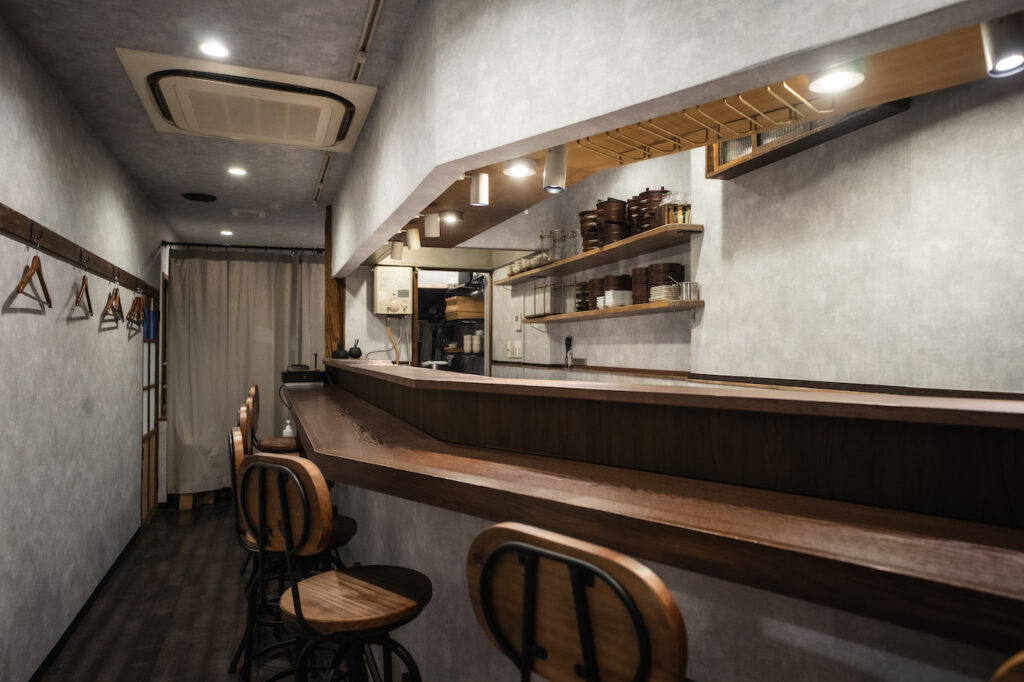

Once your stomach is satisfied, you can continue your stroll. Kenninji Temple, located on Hanamikoji Street, is the oldest Zen temple in Kyoto. The temple grounds are lined with a number of buildings, including the Hojo garden, the courtyard garden, and the garden of ○, △, △, and □, all of which are beautifully landscaped with a sense of dry and tan. If you have time, stop by the nearby Yasui Konpira-gu Shrine, which is known as a shrine for breaking off marriages.
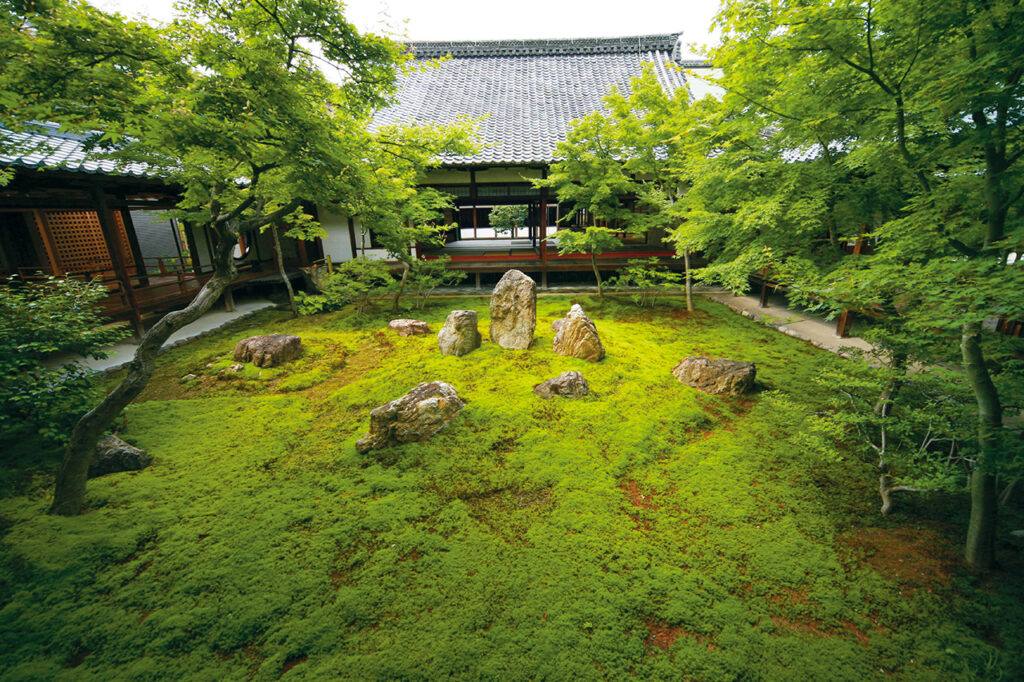
The main temple courtyard, Shion-tei, is a four-sided Zen garden. A Zen garden with a four-sided front that can be viewed from any position from the east, west, south, north, and west.

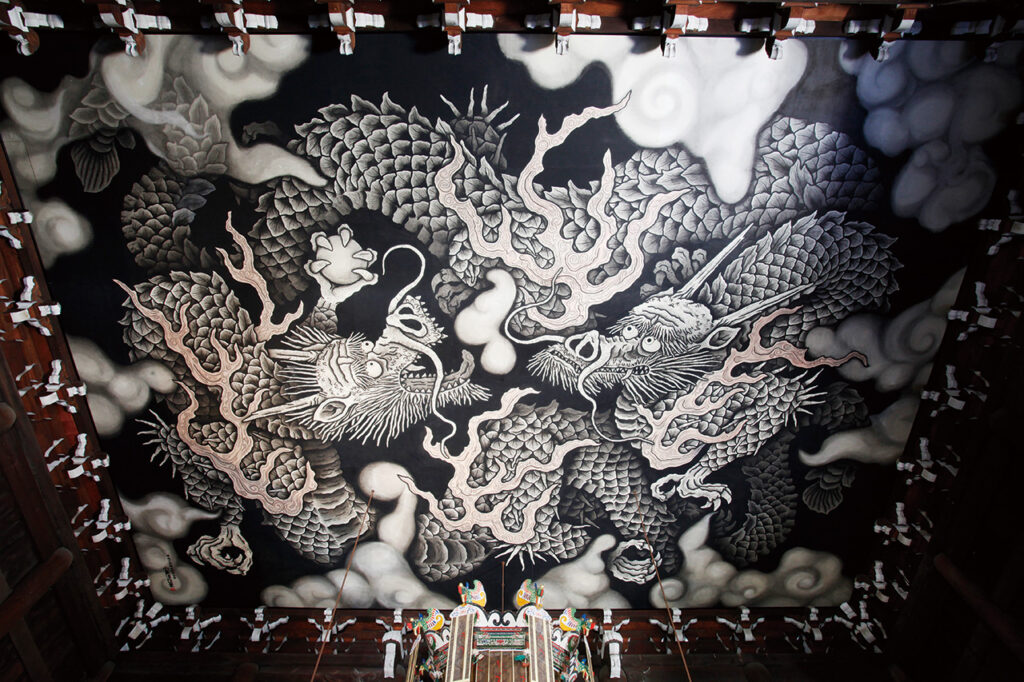
The 800th anniversary of the temple's founding was commemorated with the painting on the ceiling of the temple called "Twin Dragons", which is as large as 108 tatami mats.

If you get hungry, head to Gion Tokuya, which is known for its sweet treats made with carefully selected ingredients and freshly prepared. Their specialty, warabimochi, made by carefully kneading high-quality domestic warabimochi flour and wasanbon (a type of rice flour), will melt in your mouth as soon as it is freshly made.
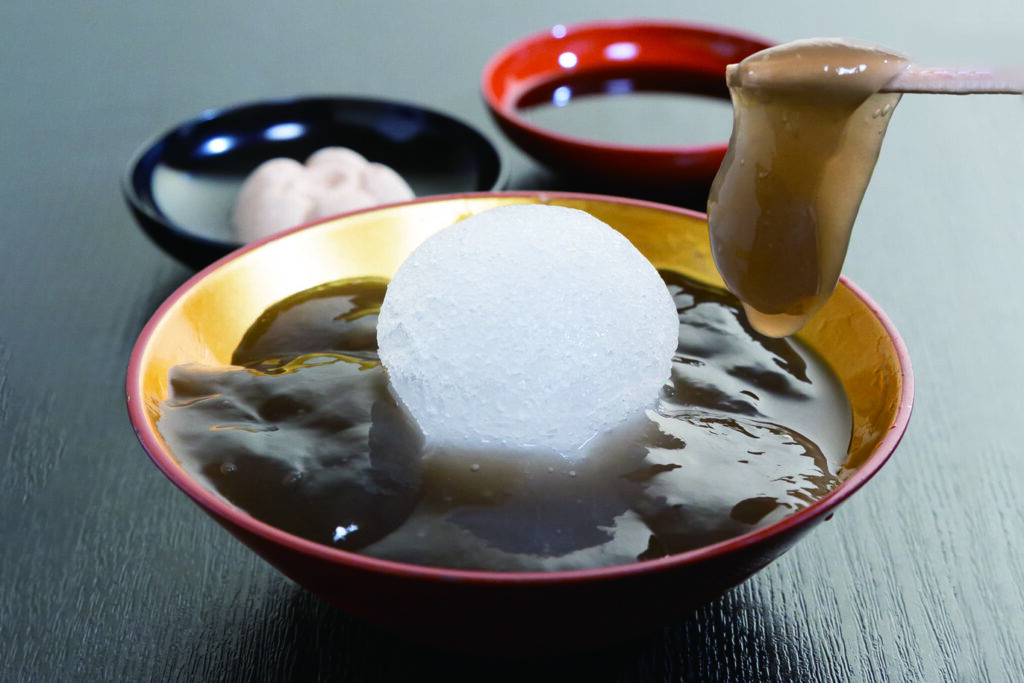
Tokuya's Honwarabi Mochi is priced at 1,280 yen. At the end, the remaining ice in the center can be poured over with molasses to make it shaved ice style.

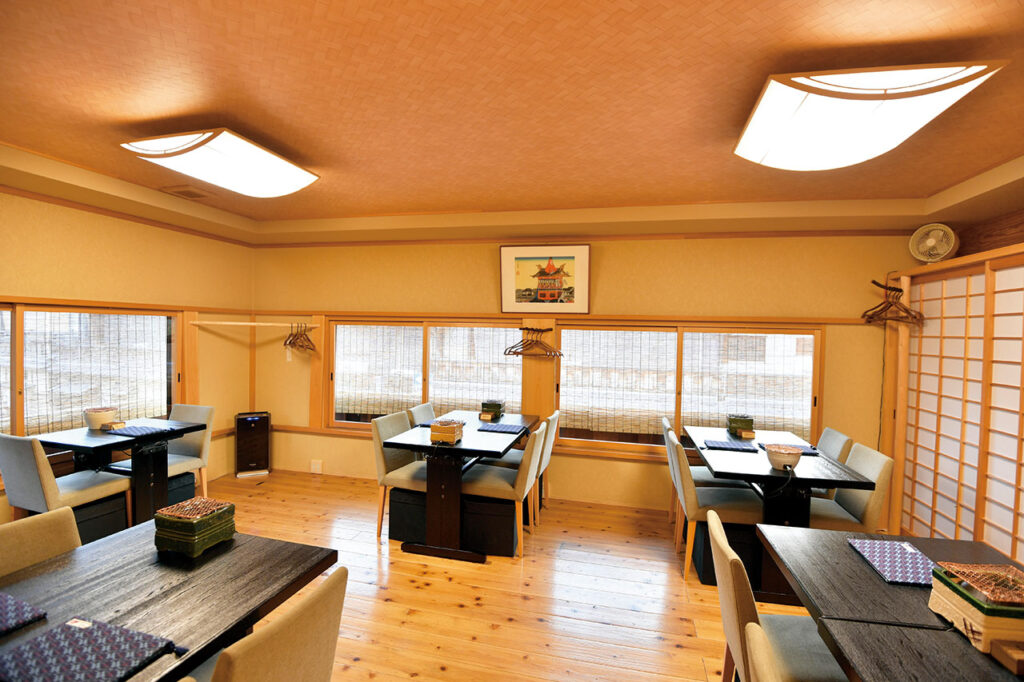

The course is coming to an end. It is time to pick out a souvenir at the popular tea specialty store [7T+]. The owner, Kenji Nakano, who has worked as a Chinese tea wholesaler and Japanese tea instructor for many years, offers only truly delicious teas, regardless of origin, variety, or price, with a total of about 80 varieties. Come and experience the profound world of tea.
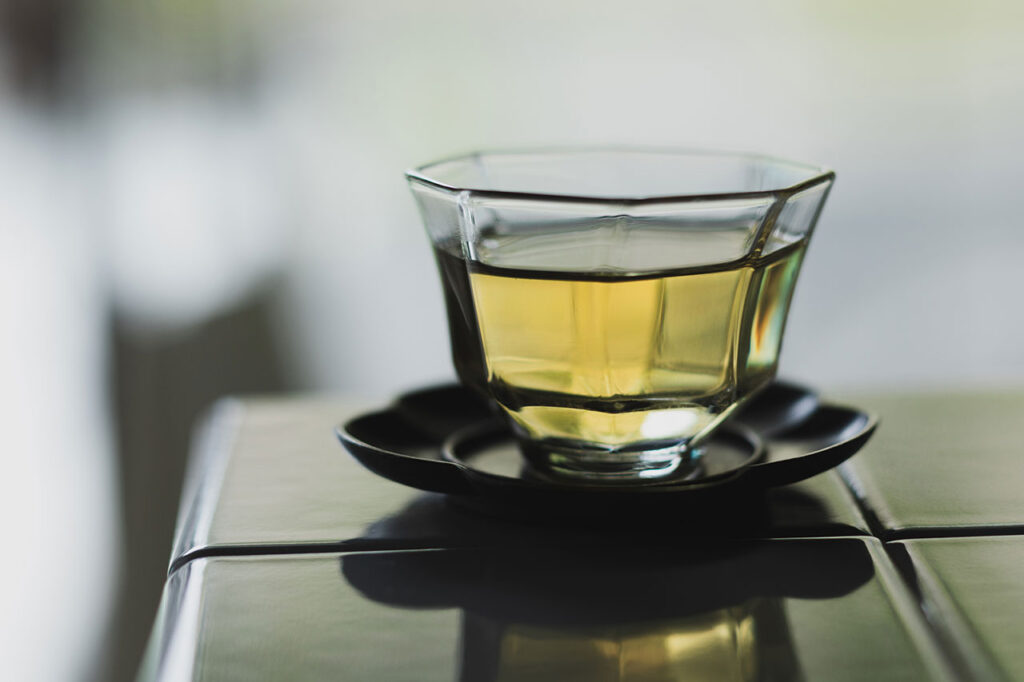
Shih Goh Ping Oolong 10g 1300yen. A rare green tea that has been produced for hundreds of years around the Phoenix Mountains in Guangdong Province. Its sweet aroma like fruits and honey can be enjoyed for many roasts.

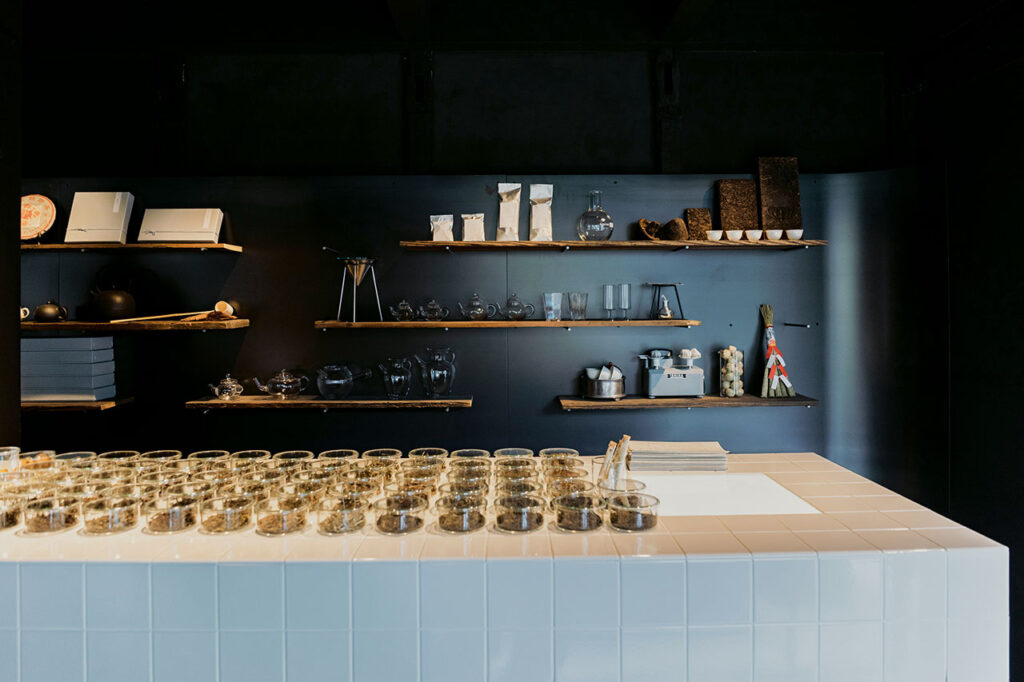

The last stop on the course is a restaurant specializing in tofu cuisine run in an elegant Kyoto townhouse along the Kamo River. While enjoying the view of the murmuring Kamo River and the Higashiyama mountains, you can enjoy Kyoto-style cuisine using homemade yuba (bean curd) and tofu, both of which are made with the utmost care. The homemade bowl of tofu is a specialty that fills your mouth with the rich, sweet flavor of the soybeans. The rich and flavorful dishes will make you feel refreshed and full of energy.
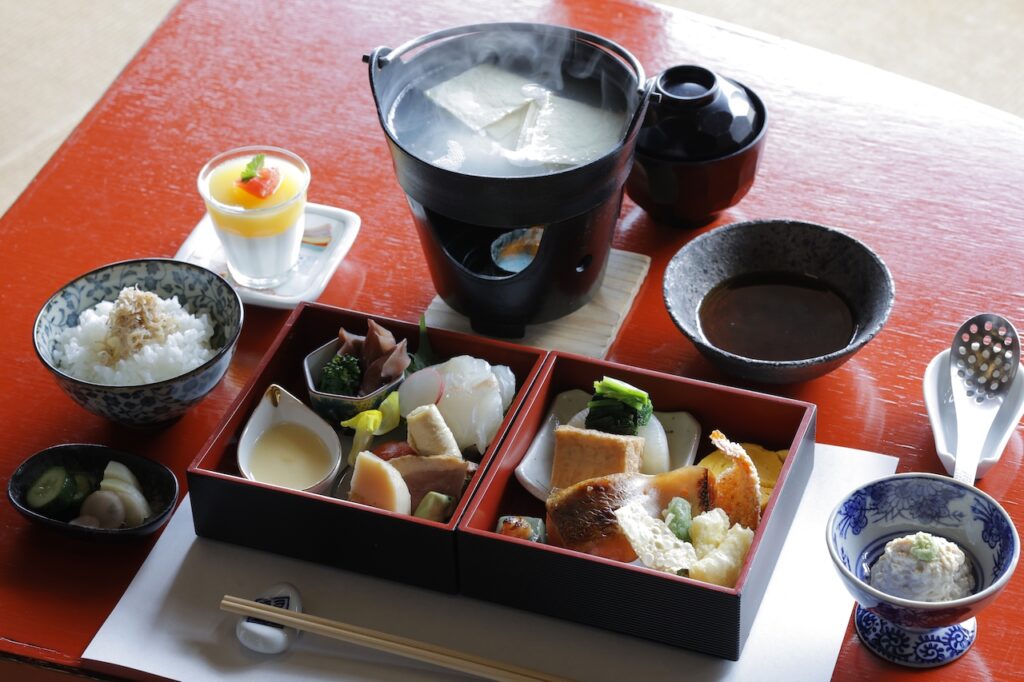
The course (example) includes seasonal appetizers such as hamo sushi, soup tofu served with yuba and homemade dipping sauce, and grilled scallop sashimi. Yuba can also be taken home.

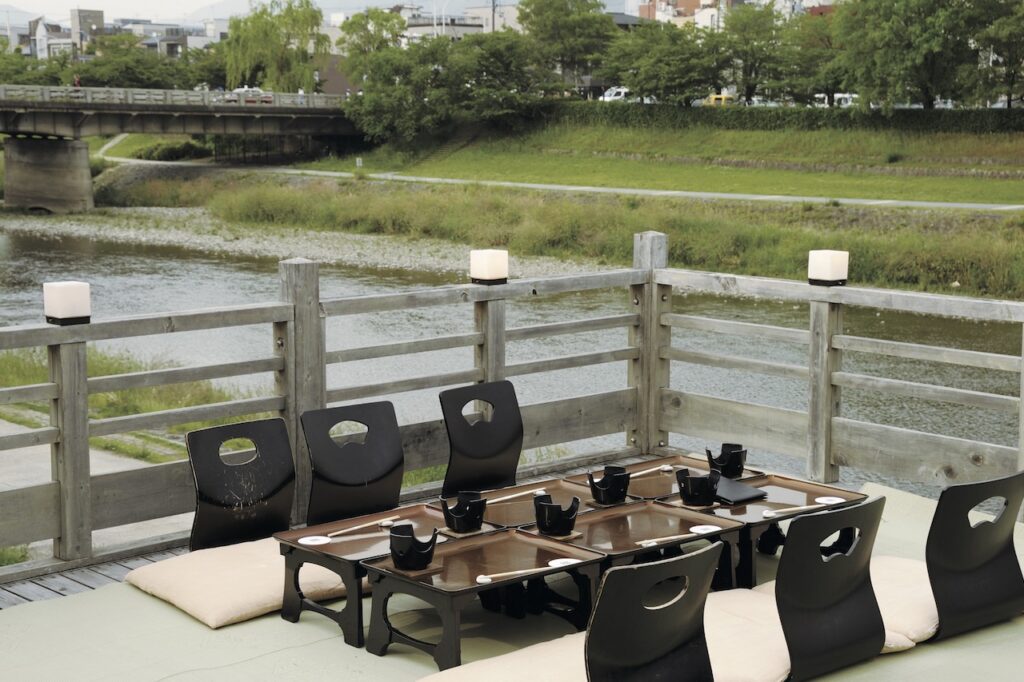
From May to the end of September, you can also enjoy kawadoko (riverbeds).

By train
5 minutes on foot to Kyoto Shiyakusho-mae Station on the Subway Tozai Line
Get off at Karasuma-Oike Station→Take the subway Karasuma Line bound for Shintanabe or Takeda, and get off at Kyoto Station.
Time required: approx. 15 min.
By bus
Kyoto City Bus Route 17 from Kyoto Shiyakusho-mae to Kyoto Ekimae stop.
Time required: approx. 20 min.
Over 600 interviews per year! An order site carefully selected by the editors who knows Kyoto and Shiga.
nowOfficial LINE friend registration500 yen OFF coupon is being issued!
Distributed every Friday morning at 8:00 am! From new restaurant information to event information that we want to share with you, We deliver articles about Kyoto that are useful to know. About 20,000 people have registered.Click here to add a friend!
 News
News Feature article
Feature article Featured event
Featured event